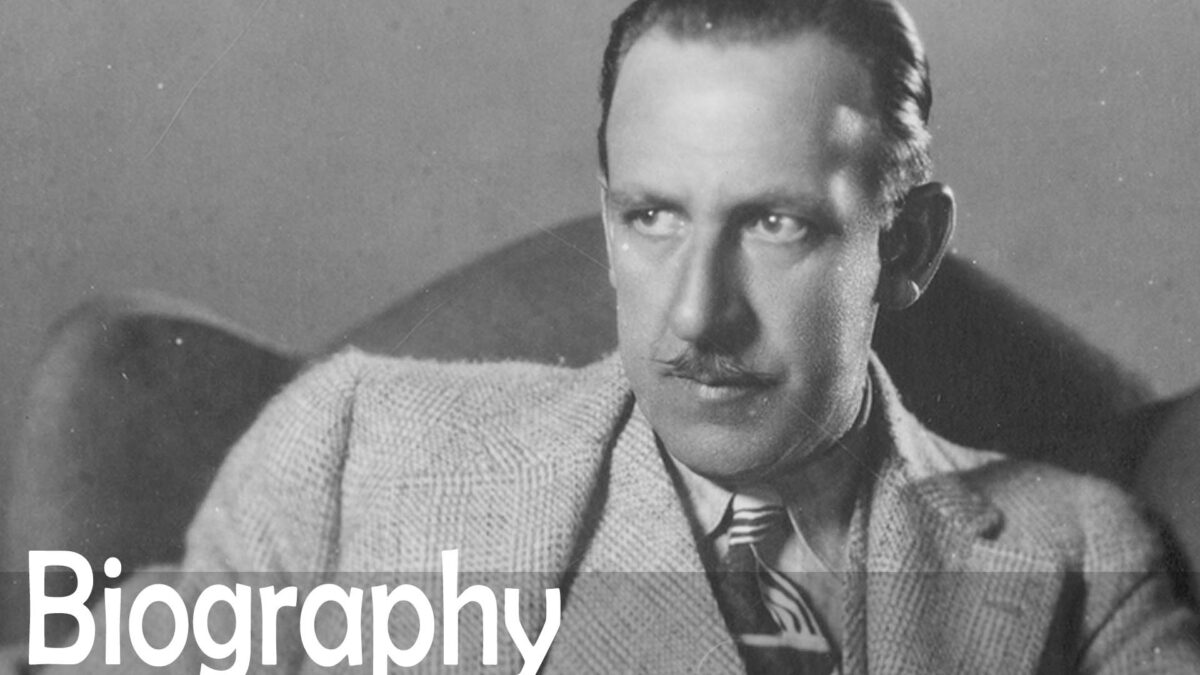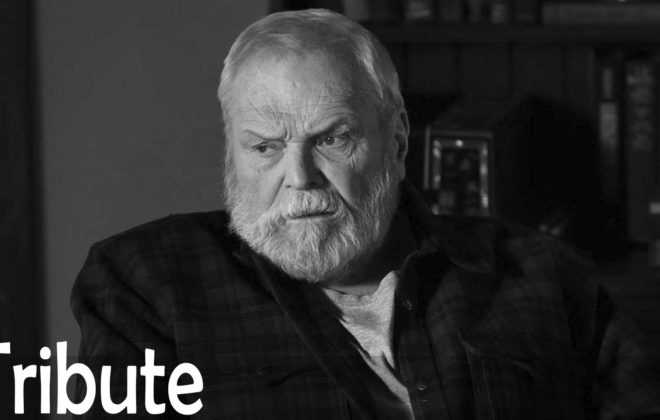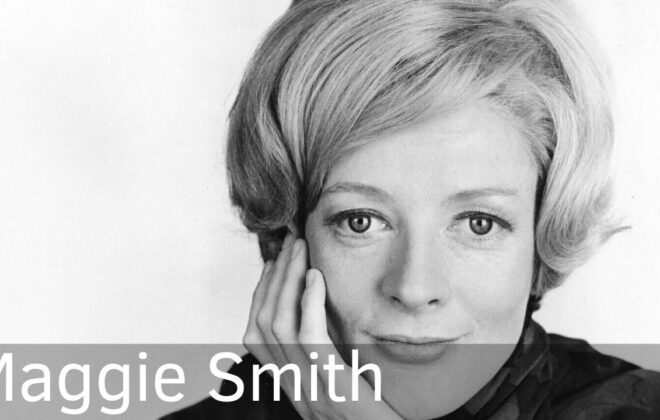Who Was Tod Browning?
Tod Browning was an actor, writer, and director best known for directing the 1931 version of Dracula starring Bela Lugosi.
Born Charles Albert Browning Jr on July 12, 1880, in Louisville, Kentucky. Tod was the third child of Charles and Lydia Browning. However, the Browning’s daughter died as an infant leaving them with Tod and his brother George. The family also took in a niece who was raised with Charles and George.
Tod as he was known, took an early interest in theatrical story telling. At the age of seven he would put on productions in his family home. The productions were so popular that he began charging a penny for admission and received a writeup in the local paper.
He attended public school with his siblings, however he did not finish high school running away from home around the age of 16 to join the circus. His reason for leaving home at such a young age has never been fully explained, as his family was reasonably well off and was reported to have had a decent childhood. He worked a variety of jobs at the circus performing as a clown, contortionist, and a barker to name a few. He created an act called “The Living Hypnotic Corpse” in which he would bury himself for multiple days with slits for air and the audience to view.
After leaving the circus he worked vaudeville often performing in blackface which was socially accepted at the time.
In 1905 he met Amy Louis Stevens, who he married one year later in 1906. They lived with her parents. During this time, he worked at a local amusement park and possibly did some work for railroad. By all accounts his marriage to Amy was not a happy marriage. Tod left Amy in 1909 and she filed for divorce which was completed in 1910.
At this point he went back on the road performing in variety shows and vaudeville. In 1913 the Biograph Company hired him as an actor, where he performed in various movies. Including films by DW Griffith. He then moved to California and in 1914 appeared in the short film Nell’s Eugenic Wedding a comedy which involved doing things like eating soap and vomiting. The film has been lost to time. He also appeared in 17 episodes of Bill The Office Boy, a series produced by The Mutual Film Company.
During his time as an actor, he met an actress by the name Alice Wilson (aka Alice Watson, aka Alice Rae) Alice was using the name Wilson, that of her ex-husband Douglas Wilson.
Browning began directing in 1915 starting with a film called The Lucky Transfer. A short film that followed a poor workman who gets wrapped up with a couple thieves. Like many of his other films, this has not survived to this day.
As his career was on the rise, unfortunately, Tod developed a drinking problem. On June 16th, 1915, after work one day Tod had a few drinks with a few colleagues. They drank late into the night. Browning got behind the wheel of his car and drove into a train at a crossing. Three other people were with him, one of those was actor Elmer Booth. Elmer was killed in the collision. Browning broke his leg and had various internal injuries, sending him to the hospital. Somehow the situation was recorded as an accident, without any reference to his drinking as the cause, instead blaming the fog of the night instead. While recovering from the accident Browning started writing screenplays. He then co-directed, along with Wilfred Lucas his first feature film called Jim Bludso (1917). Also in 1917 he signed a five picture contract with Metro Pictures, moved to New York, and he married Alice. A busy year.
1918 was the year Tod Browning signed a contract with Universal Studios. Making nine films with them including The Wicked Darling (1919) which is the first time he worked with Lon Chaney, something that he would do many times during his career.
His first major hit of a film was The Virgin of Stamboul (1920). The film is considered offense by modern standards full of racial stereotypes, and even some standards of the day. The film stars Priscilla Dean, who he would also work with regularly, as a Turkish woman who falls in love with an American soldier. Thanks to the success of the film, and others, he became known as a reliable and profitable director averaging an output of around two films a year. Under Two Flags (1922) had a lot of problems such as a sandstorm that buried equipment at the location. And a fire on the Universal lot destroying some of the film negative. Pricilla Dean was burnt when trying to save the film stock. This delayed the film’s release. The film did turn out to be a financial success. He was then tapped to direct The Hunchback of Notre Dame (1923) with Lon Chaney. However, due to his continued alcohol abuse he was removed from the project.
Besides his drinking creating problems, he had an affair with Anna May Wong, who was famous for being the first leading Chinese American movie star in Hollywood. She was underage at the time, and in the 1920s the inter-racial differences were also considered inappropriate. Due to his behavior, he was laid off from Universal and his wife left him.
Browning was not out of work for long signing a new contract with MGM in 1925. The Unholy Three (1925) was his turnaround film, about sideshow performers turning to a life of crime. The movie did well and was well reviewed. MGM optioned him for additional films. This was a productive time for Browning working with Lon Chaney, making films such as The Blackbird (1926), The Road to Mandalay (1926), and London After Midnight (1927). The film London After Midnight was destroyed in fire. Only a few stills of the film survive.
Browning eventually acknowledges his alcohol problem, solving it by cutting hard spirits out of his life. He would still occasionally drink wine or beer. He began to rekindle his relationship with his wife as well.
He continued to take from his experiences working in the circus making The Unknown (1927) The film also stared Lon Chaney, and Joan Crawford. The film is considered a groundbreaking, however at the time it was panned by critics. He did occasionally do films that were not supernatural, such as the gangster film The Big City (1928), with Chaney of course. No copies survive. His last film with Chaney was Where East Is East (1929) in which Chaney plays an animal trapper in Indo-China.
His first non-silent film was The Thirtieth Chair (1929). An adaptation of a stage play. He wanted Chaney to play a detective in the film. But Chaney wasn’t comfortable with speaking on camera yet so the role went Bela Lugosi. They also did a silent version of the film for theaters that were not yet setup for sound. His partnership with Lugosi continued into 1931, the year he made his most famous film, Dracula (1931). The film was not well reviewed by critics at the time, however to the public it was a hit. The film was a financial success for Universal, as audiences would watch it multiple times.
Back at MGM he did Freaks (1932). The film was unlike any film at that time. The movie was extremely violent for the era. He hired actual sideshow performers, Including conjoined twins, a bearded lady, and little people. Browning did try to create a positive environment for the sideshow performers but was reported as being difficult with the rest of the crew. Lewis B Mayer, hated the film and only released it to a few screens. He also had the film edited to a much shorter version than Browning’s. Audiences did not respond well to the film. Interestingly, people complained about his use of actual sideshow performers as being heartless and exploitative. Even though it could be argued that Browning was giving sideshow performers an opportunity in film that other filmmakers were not providing. The movie was banned in many areas in the US, and it was banned in the UK for 30 years.
In 1933 he did Fast Workers. This was the most expensive film of his career and also a huge financial failure. After Fast Workers his relationship with the studios continued to deteriorate. With Mark of the Vampire (1936) Browning attempted to draw upon his earlier success London After Midnight and Dracula. The film involved mysticism and vampires and used many similar shots to the previous films. It was well reviewed and did make the studio some money. The movie featured Bela Lugosi and Carol Borland. Borland departed from the way female vampire were portrayed at the time. Her character Luna had a long straight dark hairstyle, a prototype of what we now call goth.
The Devil Doll (1936) originally had a script using a voodoo theme of shrinking down people into dolls. However, sensors and the film code association were not happy about the voodoo aspect of the film. So the movie was reworked to have people being shrunk without that magical element using science to shrink people as dolls to enact revenge. The film is known for its fantastic special effects for the time, in how they made it look once people and animals were down in size.
His final film Miracles for Sale (1939) followed a magician solving crimes. Magicians were angered by the movie because it gave away many trade secrets. Many parts of the film were edited out at the request of magicians. The film was also banned in some countries due to its violence.
Studios no longer wanted to work with Browning, so he retired after Miracles for Sale moving to Malibu, California. His wife died in May of 1944. A trade paper at the time mistakenly published his death, instead of hers. He became a recluse and was suspicious of anyone attempting to help or befriend him. He put all his attention into his dog. Eventually he reconnected with his brother until his brother’s death in 1958. he actually attended the funeral unlike his parents, whose funerals he did not attend. He didn’t discuss his film career, and simply lived with his animals towards the end of his life. He eventually moved into the house of his dogs veterinarian and wife. He was diagnosed with laryngeal cancer and was unable to speak. Then after a stroke he grew worse, dying in 1962 at the age of 82. He left half his estate to the Snows, his veterinarian and wife. The rest was doled out to various people including some hospitals. Nothing was given to his family.
He stipulated that no funeral would be held for him and was buried in the same cemetery where Alice’s ashes were interred.
Many films now, are considered as cult classics such as Dracula and Freaks.
Tod Browning July 12, 1880 – October 6, 1962
Related Posts
Leave a Reply Cancel reply
This site uses Akismet to reduce spam. Learn how your comment data is processed.





